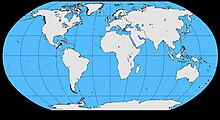| Cuban crow | |
|---|---|

| |
| Near Zapata Swamp, Cuba | |
| Conservation status | |
 Least Concern (IUCN 3.1) | |
| Scientific classification | |
| Domain: | Eukaryota |
| Kingdom: | Animalia |
| Phylum: | Chordata |
| Class: | Aves |
| Order: | Passeriformes |
| Family: | Corvidae |
| Genus: | Corvus |
| Species: | C. nasicus |
| Binomial name | |
| Corvus nasicus Temminck, 1826 | |

| |
| Distribution map | |
The Cuban crow (Corvus nasicus) is a crow species native to the northern Caribbean.
Taxonomy
Two other Caribbean crow species, the white-necked crow (C. leucognaphalus) of Hispaniola and the Jamaican crow (C. jamaicensis), appear to be very closely related to it, sharing several key morphological features. The ancestor of the fourth and fifth species from this region, the Hispaniolan (C. palmarum) and Cuban palm crows (C. minutus), would appear to be a later arrival (at least in evolutionary terms); both species show more similarities to the fish crow (C. ossifragus) of mainland North America and two Mexican species. This is despite C. minutus being sympatric with C. nasicus on Cuba, indicating two distinct arrivals of crows onto the island, and a resulting niche differentiation, similar to C. leucognaphalus and C. palmarum on Hispaniola.

Description
A stocky, medium-sized (40–42 centimetres or 16–17 inches in length) forest crow, the bill of this species is long and deep with a gentle curve towards the tip giving a large headed profile. The nasal bristles sweep forward then upward and frequently reveal the nostrils which are hidden in almost all other members of the genus Corvus. There is a patch of dark grey bare skin behind the browinsh-red eye and at the base of the lower mandible. The black plumage has a bluish-purple gloss in good light. The bill, legs and feet are black.
Distribution and habitat
It can be found quite commonly over most of the island of Cuba and on the nearby Isla de la Juventud, as well as the Turks and Caicos Islands, in woodland and areas that have been cleared for agriculture. It is frequently found around farms and villages where it seems to have adapted quite well to living in relatively close contact with human settlements.
Diet
Food consists of fruit and insects though it does appear to take human food readily and will scavenge for scraps where the opportunity arises. Large noisy flocks can be seen feeding in trees and it will also readily feed on the ground especially where grain and other seeds have been spilt or left unprotected on the surface of a field.
Call
The voice is quite remarkable and is rather un-crow like, with strange liquid bubbling notes and high ringing sounds produced in various combinations. It also produces a thin screeched "aaaaauh" that rises in inflection.
Breeding
The nest is built in tall trees, though little further information about breeding is recorded as yet.
Image links
Footnotes
- BirdLife International (2017). "Corvus nasicus". IUCN Red List of Threatened Species. 2017: e.T22706010A118781571. doi:10.2305/IUCN.UK.2017-3.RLTS.T22706010A118781571.en. Retrieved 11 November 2021.
| Taxon identifiers | |
|---|---|
| Corvus nasicus |
|